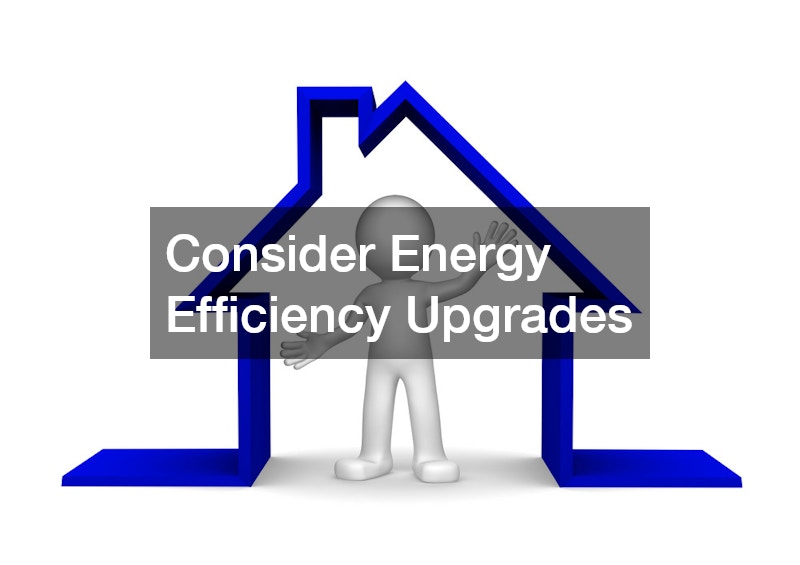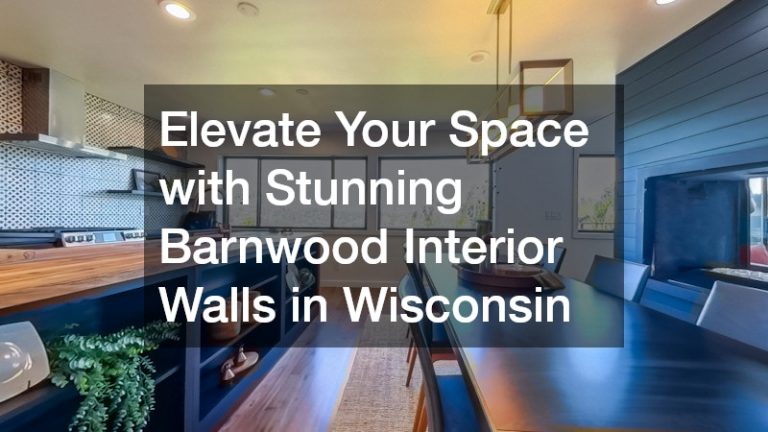

For most people, their home is their largest financial investment. So, it makes sense to want to get the absolute most out of it—whether you’re planning to sell in the near future, refinance, or just want to enjoy a more functional, beautiful, and valuable living space. Increasing home value isn’t about throwing money at flashy renovations. Instead, it’s about making strategic upgrades that offer long-term appeal and consistent returns. With the right approach, you can add more value to your home and improve your quality of life along the way.
This guide offers homeowners a comprehensive look at practical and profitable ways to increase property value. We’ll cover foundational updates, design trends, systems upgrades, and energy-efficient improvements that can make your home more comfortable and more appealing to future buyers. Whether you’re just getting started or deep into homeownership, these ideas will help you transform your house into a more valuable asset.
Focus on Structural and Functional Improvements First
Before diving into cosmetic updates, it’s important to ensure your home’s foundation and structural systems are sound. No amount of curb appeal can compensate for a home that has a failing roof, compromised plumbing, or outdated wiring. Potential buyers are likely to ask tough questions about these areas, and appraisers weigh them heavily in valuation.
Start by evaluating the overall condition of your roof. If your home has older asphalt roofing, now may be the time to consider a full roof replacement. While this is a significant investment, it’s one of the most valuable improvements you can make. A new roof not only increases curb appeal but also protects your home from water damage, improves energy efficiency, and adds significant resale value.
Don’t forget to schedule regular inspections with a reliable roofing services provider. Even small repairs or flashing replacements can go a long way toward maintaining structural integrity. Proper drainage systems, including high-quality gutters and downspouts, help protect your foundation and exterior walls from erosion and water damage, contributing even more value.
Modernize Essential Systems
Another major value booster is ensuring your home’s core systems—electrical, plumbing, and HVAC—are modern and efficient. Buyers are often deterred by older systems because they anticipate high maintenance costs and potential safety hazards. Ensuring that these vital systems are up to code not only adds peace of mind but directly translates into more value when you decide to sell.
Your HVAC system plays a critical role in comfort and energy efficiency. If your system is more than 10 years old, it’s worth consulting an air conditioning company to discuss replacement options. A modern, energy-efficient unit reduces monthly utility bills and increases the appeal of your home to eco-conscious buyers.
In addition to replacing aging equipment, routine ac service and maintenance help extend system life and ensure optimal performance. Smart thermostats, zone control, and upgraded ductwork can also be part of a larger HVAC strategy to improve your home’s energy profile.
Consider Energy Efficiency Upgrades
Energy-efficient homes are in high demand for good reason. They cost less to run, are more comfortable to live in, and have a lower environmental impact. Simple energy efficiency upgrades can dramatically improve your home’s marketability and lower your monthly expenses.
Start with insulation. Proper insulation in the attic, crawl spaces, and walls prevents heat loss in the winter and keeps cool air in during the summer. Add weather stripping to doors and windows, and seal up any air leaks around outlets, vents, and ducts.
Windows are another area to address. If your home still has single-pane windows, consider upgrading to double- or triple-pane versions that offer better insulation and soundproofing. Combine that with quality window coverings to further improve energy control.
Other ideas include installing a tankless water heater, solar panels, and Energy Star-rated appliances. These changes may not be immediately visible, but they are exactly the kinds of upgrades buyers appreciate—especially when they add measurable long-term savings.
Remodel the Kitchen Thoughtfully
The kitchen continues to be one of the most influential rooms in determining a home’s value. Buyers often base their impressions of a home on the kitchen’s layout, appliances, and finishes. If your kitchen feels outdated or poorly organized, renovating it can add considerable more value.
You don’t necessarily need to gut the space and start over. Even minor renovations, like replacing countertops with quartz or granite, refacing cabinets, or upgrading hardware, can make a big difference. For bigger transformations, consider opening up walls to create a more inviting flow between the kitchen, dining, and living areas.
Energy-efficient appliances, under-cabinet lighting, and smart storage solutions add both style and function. Consider trends like large kitchen islands, walk-in pantries, and deep drawers for maximum usability. Remember, the goal isn’t just beauty—it’s creating a kitchen that works for modern lifestyles.
Renovate Bathrooms for Function and Style
Next to the kitchen, bathrooms are the most scrutinized rooms in the home. Old tiles, leaky faucets, and outdated vanities can seriously diminish your property’s appeal. Fortunately, bathroom renovations can offer an excellent return on investment, especially when done thoughtfully.
Start with the essentials: replace worn flooring, update lighting, and install water-efficient fixtures. Modern toilets, low-flow showerheads, and touchless faucets not only reduce water usage but also add a sleek, contemporary feel.
For a more dramatic upgrade, consider adding a new bathroom or converting a half-bath into a full one. If you have space, a luxurious en-suite with a soaking tub, walk-in shower, and dual vanities can be a strong selling point. Stylish tile work, heated floors, and well-placed lighting can further elevate the space.
Improve Curb Appeal and Landscaping
First impressions are crucial, and your home’s exterior is the first thing buyers see. Enhancing curb appeal not only adds more value to your home but also makes it more inviting to guests and future buyers alike.
Start with basic maintenance: mow the lawn, prune bushes, clean the driveway, and touch up exterior paint where needed. Replace or repaint your front door, update house numbers, and install new lighting for a welcoming entry.
Landscaping upgrades go a long way. Add flower beds, hardscaping elements like stone pathways, and drought-resistant plants to keep maintenance low. Consider installing artificial turf flooring if you want the lush look of a green lawn without the upkeep. It stays vibrant year-round and appeals to homeowners seeking eco-friendly options.
Outdoor living spaces are also incredibly desirable. Building a deck, patio, or outdoor kitchen can provide functional entertaining space that adds more value while making your home more enjoyable to live in.
Maintain and Update Outdoor Amenities
Pools, hot tubs, and fire pits can all enhance your property’s appeal—if they’re properly maintained. If you already have a pool, make sure it’s in excellent working condition. That includes scheduling regular inspections, cleaning, and swimming pool repair when needed.
Potential buyers often view pools as either a luxury or a liability, depending on their condition. Keep the area looking fresh with updated tile work, secure fencing, and outdoor seating. Consider modern upgrades like solar heating or water features to elevate the space further.
Smaller amenities like upgraded lighting, custom landscaping, or pergolas also add more value, especially when they expand your home’s livable square footage and enhance year-round usability.
Utilize Underused Spaces
Many homeowners overlook valuable square footage that’s hidden in attics, basements, and garages. Turning these unused areas into functional living space can significantly boost value.
Basement conversions are popular for home theaters, gyms, game rooms, or extra bedrooms. Attics can become cozy offices or guest quarters with the right insulation and lighting. Garages, too, can serve multiple purposes beyond parking—consider custom storage, workbenches, or even a home studio.
Before making any major changes, consult a structural engineer or contractor. You may need to address code compliance, waterproofing, and egress windows depending on how the space will be used.
Adding square footage, even if not counted in official tax records, gives potential buyers more flexibility and increases perceived value.
Add or Update Functional Features
Today’s buyers value convenience and functionality just as much as beauty. Adding features that make daily life easier can give your home a competitive edge.
Consider installing smart home technology like lighting control systems, security cameras, and voice-controlled thermostats. These features don’t require major renovations but offer more value by enhancing comfort and safety.
Other helpful additions include mudrooms, built-in storage solutions, and upgraded laundry areas. By rethinking how your home works—not just how it looks—you can create a more functional space that appeals to modern families.
If your home has older mechanical systems, check for inefficiencies. Work with a professional demolition company to remove obsolete materials before installing newer, more space-efficient units.
Don’t Overlook Pest Prevention
Pest control might not be glamorous, but it’s vital to maintaining your home’s integrity. Termites, in particular, can cause extensive damage that’s both costly and difficult to detect. Regular inspections from a licensed termite exterminator are essential for identifying early signs of trouble.
Likewise, seasonal issues like wasp nests or beehives can damage structures and reduce your home’s appeal. Hiring bee exterminators to manage infestations ensures safety and preserves exterior surfaces.
A clean, pest-free home is more marketable and more livable. Keeping these problems at bay ensures all your other renovations aren’t compromised by unseen issues.
Upgrade the Plumbing System
Another often overlooked component of home value is the plumbing system. Corroded pipes, weak water pressure, and outdated fixtures can be a turnoff for buyers and an inconvenience for homeowners. Evaluate your system for leaks, efficiency, and performance.
Replacing galvanized pipes with PEX or copper ensures reliability. Install modern fixtures and consider upgrading to a tankless water heater for improved performance and energy savings.
If your home uses well water, ensure regular well pump servicing is scheduled to keep the system in good working condition. Nothing undermines a beautiful home faster than plumbing issues—fixing them early adds real, tangible value.
Keep Up With Seasonal Maintenance
Routine upkeep is one of the simplest ways to maintain and build more value in your home. Seasonal maintenance includes cleaning gutters, servicing HVAC systems, inspecting roofs, trimming trees, and checking for leaks or signs of wear.
Create a calendar for home maintenance tasks and stick to it. Buyers are more likely to trust a home that shows signs of regular care. Deferred maintenance often leads to larger problems, which can drive down your home’s value and delay the sale process.
Proactive maintenance is also a way to protect all your past investments. By taking care of your home, you ensure that every upgrade—from roofing to HVAC to landscaping—continues to deliver benefits for years to come.
Getting more value out of your home requires a thoughtful blend of strategic planning, consistent maintenance, and well-executed upgrades. Whether you focus on structural improvements, modernizing essential systems, expanding living space, or enhancing curb appeal, the goal is the same: to create a home that performs better, looks better, and is worth more.
Start by ensuring that your home’s roofing, plumbing, and HVAC systems are functioning efficiently. Work with professionals like a demolition company to remove outdated components and replace them with modern, energy-efficient alternatives. Maintain outdoor amenities through swimming pool repair and keep pest threats at bay with termite and bee exterminators. Enhance outdoor living with smart landscaping and artificial turf flooring, and make sure your gutters and drainage systems are up to par.
Every improvement you make is a step toward creating a home that’s not only more enjoyable to live in but also more valuable when it’s time to sell. With the right upgrades and a long-term mindset, you can turn your property into a high-performing asset that rewards you now and in the future. If you’re ready to take your home’s value to the next level, don’t hesitate to reach out to reliable local professionals in the area. They can help you craft a custom plan to bring your vision to life. If this is your first time investing in valuable home repairs, ask friends, family, and neighbors for recommendations. We hope this handy guide serves you well when you’re prioritizing the value of your home. Good luck!






